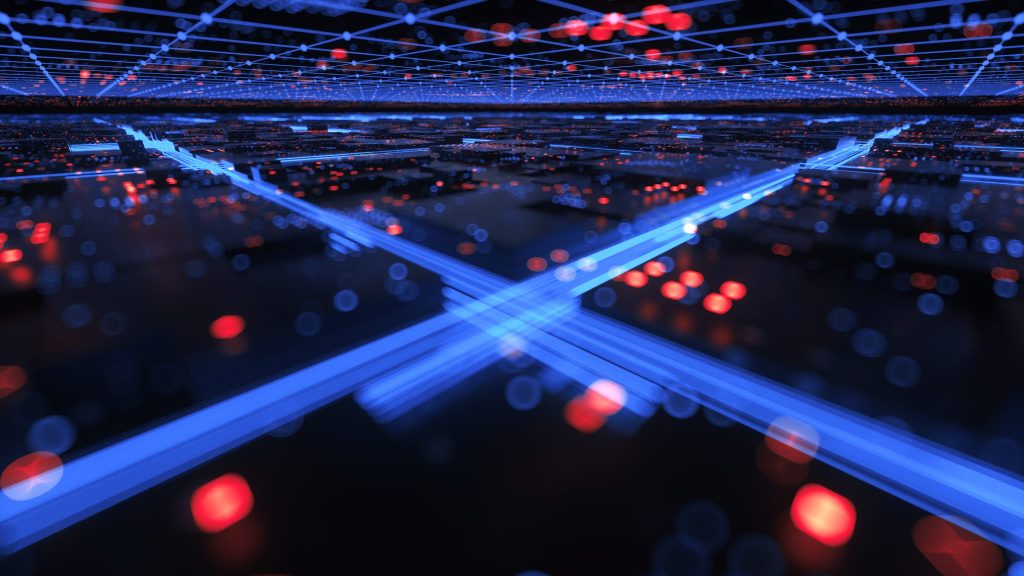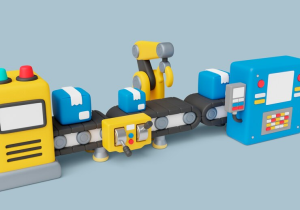What Are the Considerations for Selecting the Right Edge Server For Businesses?
5 min read
What Are the Considerations for Selecting the Right Edge Server For Businesses?
The world of technology is constantly evolving, and the way we process information is no exception. Cloud computing has been a game-changer, but for some businesses, it’s not the whole picture. That’s where edge computing comes in, bringing processing power closer to the source of data – and that’s where edge servers play a starring role.
So, you’re thinking about implementing edge services in your business? Great! But before you jump in, there are some key considerations to ensure you choose the right edge server solution. Let’s delve into the factors you need to think about to make an informed decision.
What is Edge Computing, Anyway?
Picture your agency’s data being processed and stored in a large information center located in a remote area. That’s how cloud computing has historically operated. Now photograph smaller processing devices dispersed nearer to the places where the data are produced, along with manufacturing vegetation, retail establishments, or even self-driving cars.
These outlying websites are home to data servers and are miniature data centers. Before, in all likelihood, transferring the data to the cloud for added analysis or SSD storage, they accumulate, handle, and have a look at the data locally. There are various advantages to this strategy:
Faster Processing:
Edge computing minimizes latency, or the postponement, incurred by transmitting data from edge to edge to a primary cloud server by way of processing information locally. For real-time packages like industrial automation or site visitor management, this is essential.
Increased Bandwidth:
By lowering the quantity of data that travels to the cloud, part servers enhance bandwidth and make it available for different critical obligations. This is specifically essential for corporations with spotty net access.
Enhanced Security:
By processing sensitive data locally rather than sending them to the cloud, safety dangers related to their transmission can be minimized.
Offline Functionality:
Edge servers can carry on with their important obligations even in the event of a web connection failure.
Understanding Your Business Needs
Now that you grasp the essence of edge computing, it is time to assess your specific business desires. Here are some questions to ask yourself:
What form of data are you operating with?
Is it patron transactions, device sensor data, or video surveillance footage? Different data require one-of-a-kind processing methods.
What Is The Specified Level Of Real-Time Processing?
When making choices in real time, do you want instant insights, or can you process the data later?
How Properly Are You Connected To The Internet?
An uninterrupted and speedy internet connection is critical for edge servers and cloud communication to function easily.
Do You Fear Protection?
What degree of protection is essential, and how touchy are the data you’re processing?
How Much Money Do You Have?
The value of side-server solutions varies depending on the configuration.
Choosing The Right Edge Server
Once you understand your enterprise’s desires, it is time to discover the arena of area server options. Here are some key data to remember:
- Processing Capacity: Your data server’s capability has to correspond to the complexity of the data it’ll process. Greater processing capacity permits faster coping with and evaluation of large dataets.
- Storage Capacity: How much storage space will your edge server require? Before transferring data to the cloud, do you require brief buffering or long-term storage?
- Dependability and Durability: Edge servers might be utilized in difficult conditions. Think about things like resistance to dust, vibration discount, and temperature tolerance.
- Security Features: To safeguard your sensitive data, select a part server with included safety functions like getting entry to control and encryption.
- Scalability: Will you need more statistical processing as time goes on? Select a server that can, without problems, have its processing electricity, storage capacity, or quantity of devices upgraded.
- Handling Ease: To what quantity does your IT workforce feel comfortable handling and protecting part servers? Think approximately how smooth it is to apply the control gear and operating system to the server.
Beyond the Hardware: Software and Connectivity
One edge of the puzzle is the hardware. The software program on the way to perform on your part servers is another esge to reflect on. There are viable alternatives for this software: pre-built solutions for tasks like industrial automation or video analytics, or custom-constructed software programs to address your particular information processing requirements.
Connectivity is yet another essential issue. Will communication between your data servers and an important cloud server be required? Select a solution that offers stable and reliable protocols for communication.
Deployment and Ongoing Support
Selecting the suitable server hardware and software is the best way to start. Careful planning and non-stop guidance are important for the successful implementation of edge computing. This ensures that your machine’s capabilities are as expected and present the expected blessings. Here are a few things to think about:
Deployment: Location, Location, Location
Edge servers are installed on the actual websites on which the data is generated, in comparison to traditional centralized servers. This might be an oil rig in the middle of the sea, a retail established order, or maybe a manudatauring unit ground. Where will your area servers be located, then?
- Physical Security: Take the deployment website’s physical protection into account. Are the servers going to be placed in a safe area with appropriate access control?
- External Elements: Consider your on-the-spot environment. Will there be extremes in dust, vibrations, or temperature for the servers? Select servers that meet the vital stability standards.
- Power and Cooling: For your data servers to operate at peak performance, make sure there is a steady delivery of power and sufficient cooling.
Security Configuration: Building a Digital Fortress
Guarding your important information are data servers, which resemble little fortifications. To forestall undesirable admissions and data breaches, the right safety configuration is essential.
- Patching Firmware And Ensuring Stable Boot: Prevent unauthorized running systems from loading by activating stable boot capabilities. To deal with security vulnerabilities, put into effect an everyday update process for server firmware.
- Controlled Access: Limit who has access to the servers’ data. Make use of consumer authentication techniques and strong password regulations.
Ongoing Maintenance: Keeping Your Edge Sharp
Edge servers need constant renovation to perform at their best, just like any other technology. Here’s a way to make certain your edge doesn’t go to pot:
- Keeping a watch on and warning: To keep an eye fixed on server safety, health, and performance, set up tracking systems. Set up alerts to tell you when something might go wrong.
- Software Upgrades: Update the security software program, apps, and server operating machine on an ordinary foundation to repair insects and vulnerabilities.
Conclusion
You can make sure that the deployment of edge computing goes smoothly and successfully by giving careful thought to this deployment and continuing support factors. Recall that edge computing is a process rather than a final goal. Your edge server requirements may change as your business needs do. Evaluate your system’s performance on regularly modify your edge strategy as necessary.




